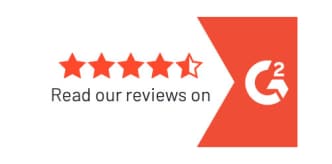Many Americans are unaware of the different types of retirement-planning accounts available to them. Most people have heard of traditional, employer-sponsored 401(k) plans, but there are other options.
Having a good grasp on what the choices are helps put investors in a better financial position, and it makes them feel more confident about investing. Two popular options for small-business owners and self-employed individuals are the SEP IRA and the solo 401(k), both of which offer a number of benefits and tax advantages. In this article, we’ll take a look at the differences between these two retirement plans and help you evaluate which may be better for you.
What Is a SEP IRA?
A SEP (Simplified Employee Pension) IRA is an Individual Retirement Account that allows self-employed individuals and small business owners to save for retirement. Close to 50 million people in the U.S. are either self-employed or own small businesses, so the availability of SEP IRAs as an investment vehicle to help save money and build wealth for retirement is critically important.
Contributions to a SEP IRA are tax-deductible and earnings are tax-deferred until withdrawn, making it a great choice for those looking to reduce their current tax liability. Choosing a tax-deferred investment strategy means you avoid paying taxes on your earnings for the time being, keeping more money in your pocket now and allowing your investments to grow without restrictions. Additionally, tax deferment can benefit workers who are more likely to find themselves in a higher tax bracket during their working years than during their retirement years.
The most attractive benefit of a SEP IRA is arguably that the contribution limits are much higher than for a traditional IRA, with the maximum contribution for 2023 being 25% of compensation or $66,000, whichever is greater.
While many Americans are unable to contribute such large amounts to their 401(k) accounts, those who can and wish to may want to look at opening a SEP IRA. Some who choose to participate in this plan have had a sudden and significant bump in income, while others are simply looking to contribute more as they begin the race toward retirement in earnest.
If you have recently inherited money or you have increased your income through marriage or another means, giving you the ability to save and invest more, the results can make a real difference in the size of your nest egg.
What Is a Solo 401(k)?
Another option for self-employed individuals is the solo 401(k). This type of retirement plan is similar to a traditional 401(k), but designed specifically for self-employed individuals and small business owners — a demographic that would otherwise be shut out of the retirement investment game if it were not for the availability of such investment vehicles.
A solo-k provides the same benefits of choosing a tax-deferred investment vehicle as the SEP IRA does. And although the contribution limits are technically the same — $66,000 in 2023 — depending on how you make your contributions, you may be able to make them faster with a solo-k and thus earn more on your investments.
That’s because with a solo-k, you can make contributions as an employee in lump sums until you reach the limit, rather than as a percentage of your income each pay period (as with a SEP IRA). Additionally, once you reach the employee maximum in a solo-k, you can switch to making contributions as an employer, increasing your savings and reducing your business taxes in one fell swoop.
If you’re over age 50 and you want to contribute the maximum, a solo-k also provides for the opportunity to contribute a catch-up sum ($7,500 for 2023). A SEP IRA provides no such opportunity, because it is 100% employer funded — employees cannot contribute.
Other Important Considerations
Additionally, if you opt for a SEP as a small-business owner, you must contribute equally to all your employees, including yourself — you cannot contribute more to your own account than to your employees’ accounts. So if you are not prepared to fund your employees’ accounts at the same level as your own — or you think you may hire new employees whose accounts will need funding — this can impact your personal savings. It may be affordable to pay yourself 5%, but if you have to pay everyone the same percentage, you may be able to afford only 2% or 3%, and that means you could fall short of saving the maximum during that year
However, if you’re a small-business owner, you can’t use a solo-k if you want to make contributions to your employees (unless it’s your spouse) — you would need a SEP in that instance.
Another factor that you may want to weigh when making your decision is that with a solo-k, you can choose between making pre-tax or after-tax contributions; a SEP IRA only gives you the pre-tax option.
Which Is Better?
The best plan for you depends on your individual situation. Both the SEP IRA and the solo 401(k) offer great tax benefits, so it’s important to consider both options before making a decision.
With 401GO, there is no paperwork required to open a solo 401(k) account and it takes only a matter of minutes for you to open your account and start contributing.
Disclaimer: Investments hold risk of loss, consult your financial advisor before making a decision on which account is best suited for you.



